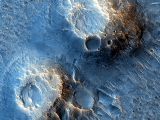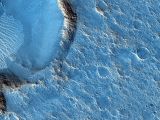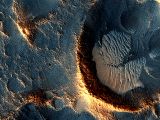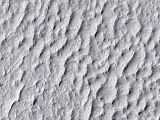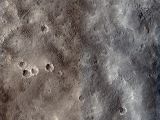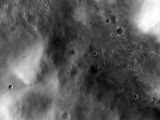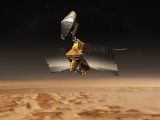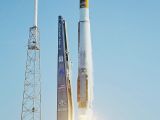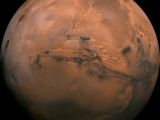US space agency NASA has just released a new set of images revealing landscapes on the Red Planet. The views, delivered by the Mars Reconnaissance Orbiter, all show terrains featured in Ridley Scott's “The Martian.”
“Images from a NASA Mars orbiter's telescopic camera reveal details of real regions on Mars where a new Hollywood movie, ‘The Martian,’ places future astronaut adventures,” the space agency explains.
For starters, these are views of a Martian plain dubbed Acidalia Planitia. In the movie, this is the landing site for the Ares 3 mission and the place where stranded astronaut Mark Watney spends most of his time once alone on the Red Planet.
NASA scientists say that, although the movie and the book would have us believe Mars' Acidalia Planitia is a fairly people-friendly terrain, all flat and easy to navigate, this isn't really the case.
On the contrary, the region's topography includes fields of boulders, mounds, fissures in the ground, steep slopes and craters. Had astronaut Mark Watney been left stranded in such a location, he would've had serious trouble navigating the site.
Then there's the Schiaparelli crater, the base for the movie's Ares 4 mission, and the Marth Crater, where Mark Watney encounters a dust storm while traveling to the Ares 4 landing site. Inside the Marth Crater are smaller impact craters.
NASA's Mars Reconnaissance Orbiter: The basics
The Mars Reconnaissance Orbiter, built by Lockheed Martin under the supervision of NASA's Jet Propulsion Laboratory, was launched in August 2005 from the Cape Canaveral Air Force Station in Florida.
It reached Mars and placed itself in the planet's orbit a few months later, in March 2006. With the help of its HiRESE (High Resolution Imaging Science Experiment) camera, it has since obtained well over 39,000 views of Martian landscapes.
“Each observation by HiRESE covers an area of several square miles and shows details as small as a desk,” mission scientists explain.
“HiRESE has provided important information used in selecting landing sites for NASA's Curiosity Mars rover and other robotic missions,” they add.
When launched, the Mars Reconnaissance Orbiter was only expected to perform science operations for a couple of years. Although orbiting the Red Planet for about a decade now, however, the probe is still alive and kicking.

 14 DAY TRIAL //
14 DAY TRIAL // 
